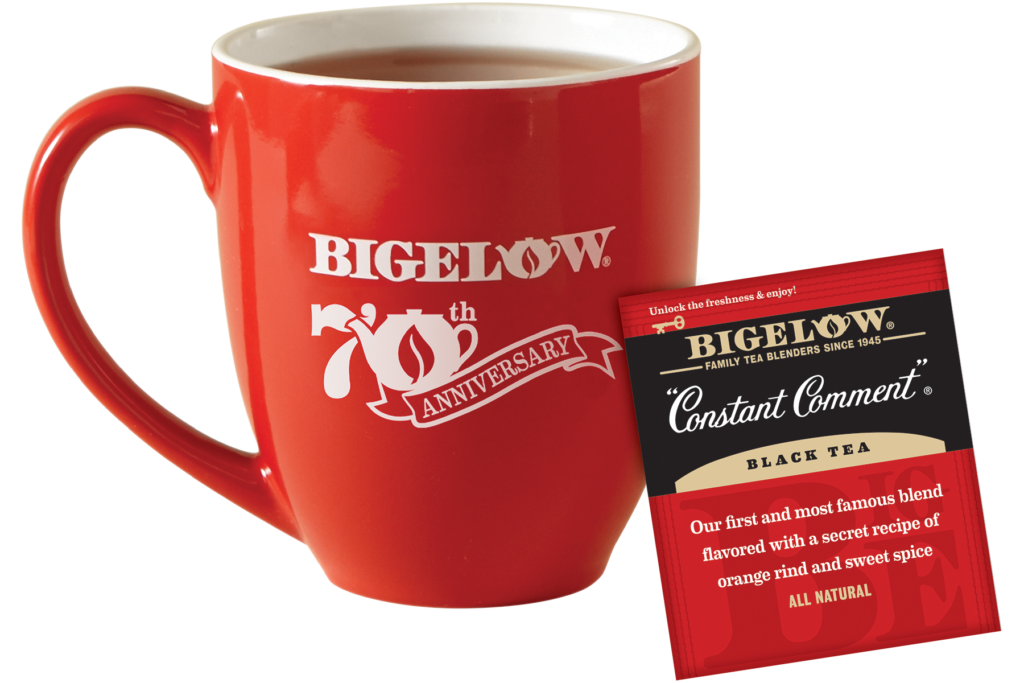In the 1920s, Ruth Campbell Bigelow was a successful interior designer living in Manhatten with her husband, David, an accountant at book publisher McGraw-Hill. During the darkest years of the Great Depression, however, David lost his job and Ruth’s business dropped off considerably. To sustain their family during tough economic times, the Bigelows began selling Chinese seasonings that they blended and packaged in their home.
After finding some modest success in the spice business, Ruth was determined to expand into other products, including tea. She uncovered an old colonial recipe book and modified one of its tea recipes to make the blend her own. Upon testing it with friends, Bigelow received such a steady stream of positive feedback she named it “Constant Comment” and it became the signature blend of the Bigelow Tea Company.
Using their innovative “whiffing jar” (which enabled potential customers to sample the tea’s aroma before purchasing), the Bigelows found success marketing their products to such important retailers as Bloomingdale’s. They moved their company to Norwalk in 1950, where it continued to expand despite the great devastation caused by the Flood of 1955. Today, R. C. Bigelow Inc. operates out of Fairfield, Connecticut, and is a widely recognized leader in the specialty tea market.
Learn More in Connecticut Explored Magazine
To learn more about the emergence of the Bigelow Tea Company and its place in Connecticut’s history, read Alan Bisbort’s article, “Bigelow Tea–A Connecticut Tea Party” in Connecticut Explored magazine.
© Connecticut Explored. All rights reserved.
Note: ConnecticutHistory.org does not edit content originally published on another platform and therefore does not update any instances of outdated content or language.









